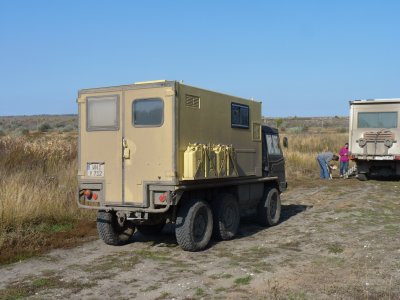
We stopped for a spot of lunch.
Lutz, with dog and 6wd Pinzgauer, stopped for a chat. Big brother of the Haflinger the Pinzgauer surprised me with its relatively small size. A nice go anywhere camper.
From Germany he didn't need a visa for Russia so had a much more leisurely time than us. He'd been in Mongolia in July, when it was still raining.
We think we must have been lucky with our timing for Mongolia. Apparently our route across the north can be "hard".
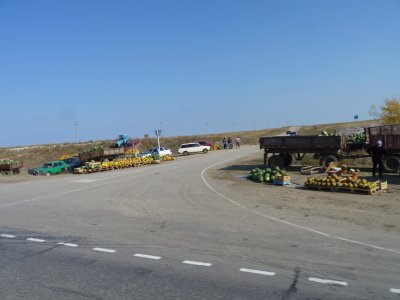
Literally tonnes of them.
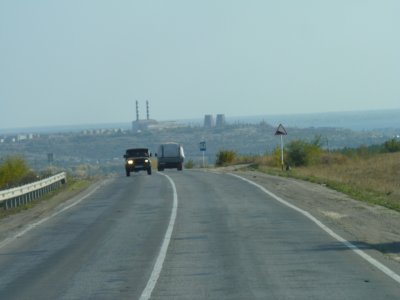
Most towns put castles, or cathedrals, or some similar edifice on the hilltops.
Kamyshin had a power station.
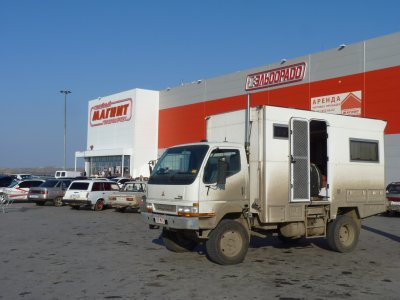
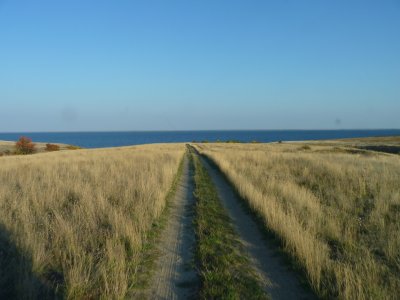
It was a track used for fishing access.
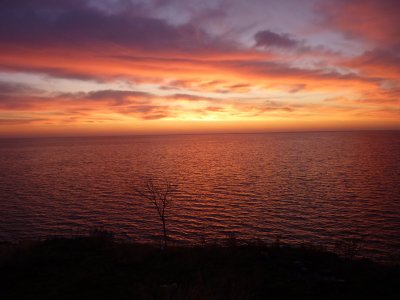
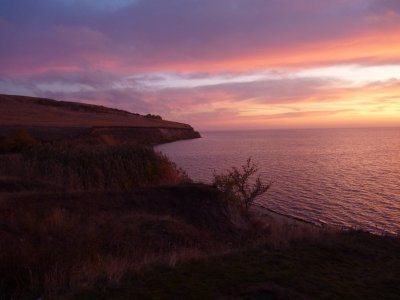
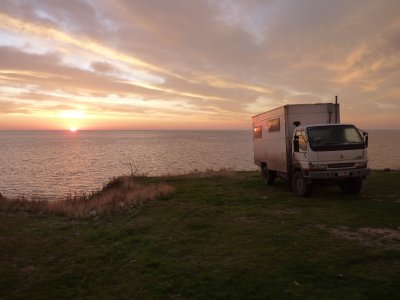
The track left the main road at N47.7988, E43.4278
The campsite at the end of the track is at N49.6952, E45.2054
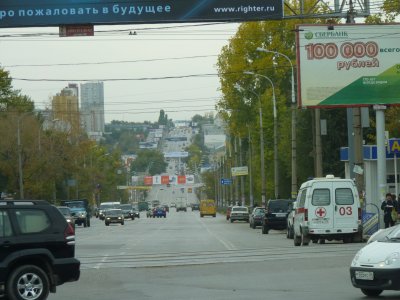
Its a long thin sort of city. Our aim was to get to the other side, about 50km of city.
Partway through the gps decided to play up and repeatedly remind us it needed charging, despite being plugged in.
A big distraction when dealing with traffic and an awkward route.
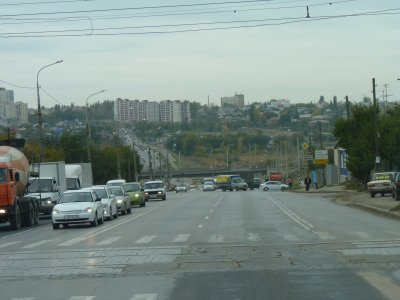
Sadly we missed the memorials.
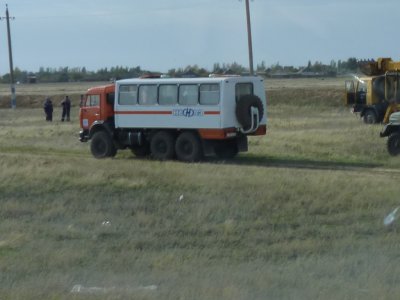
We headed south-west, towards Rostov-na-Danu and the Ukraine border.
This bus is on a 6wd Kamaz chassis. Very large wheels. Very common on both sides of the Urals. Ideal for a motorhome conversion!
We did see a vehicle on the same chassis bogged in mud, being pulled out by another one.
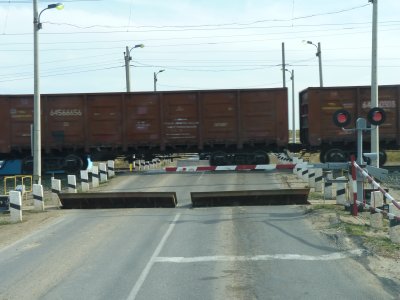
Off the photograph is a poster with photos of level crossing accidents. Not nice.
The steel barriers that rise from the road are seriously heavy affairs. Guaranteed to stop anyone trying to race trains.
Having driven a small train I have an understanding of how difficult they are to stop and hopefully will never get in the way of one.
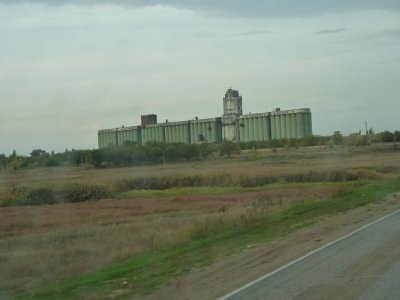
We don't know enough about where most of the grain is grown in Russia. Just that there is lots.
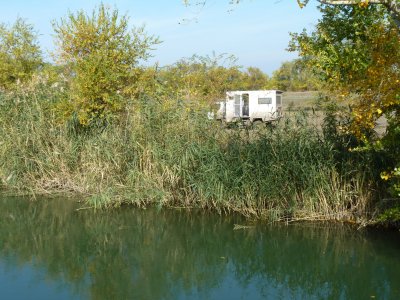
We were looking for the Volga - Don canal.
The Volga flows into the salty (land locked) Caspian Sea, its west bank has been a line of hills extending south from the Samara Bend.
The Don flows from somewhere near Moscow towards the Volga but is stopped by that same line of hills so turns south west to the Sea of Azov, and the Black Sea.
The canal is one way (the only way?) for shipping to get from the Black Sea to the Volga.
This little irrigation canal, we stopped for lunch, was the nearest we got to the water. We did see a couple of bridges and lock gates in the distance.

This one was next to a derelict building near Starocherkasskya.
It rained and we needed 4wd to get back to the road.
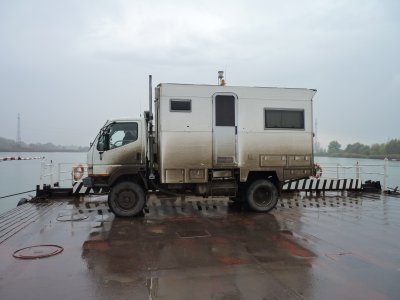
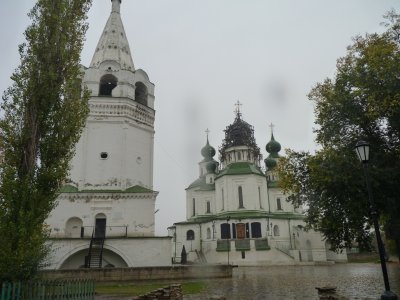
Eventually the capital was moved to Novocherkassk.
This is the Resurrection Cathedral with bell tower.

As is the chandelier in the centre.
We think we are getting used to Russia. It seems that nothing is volunteered! It wasn't until we asked if we could take photographs that the minder turned on the lights.
He turned out to be quite keen to tell us about the iconostasis. But our lack of language got in the way. Very frustrating.
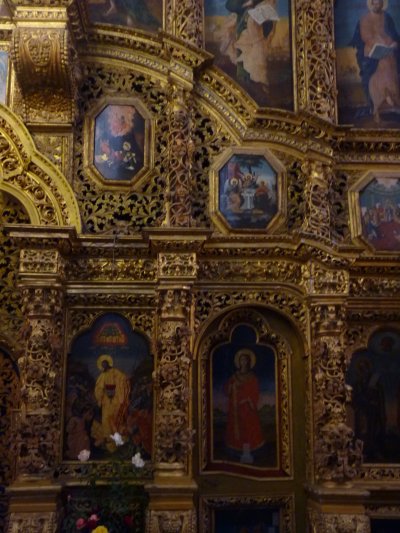
In, you guessed it, saintly poses.
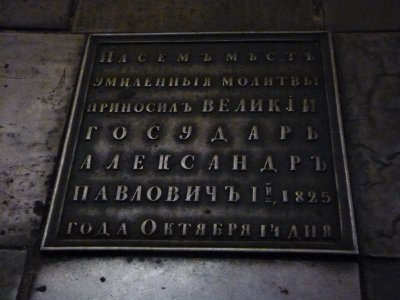
Being a metallurgist was absolutely no help at all in identifying the metal.
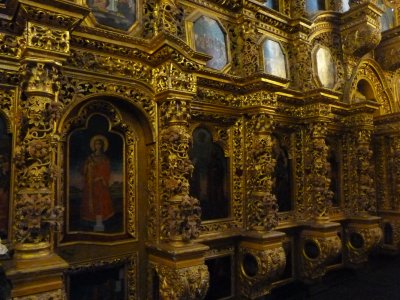
Wood painted gold.
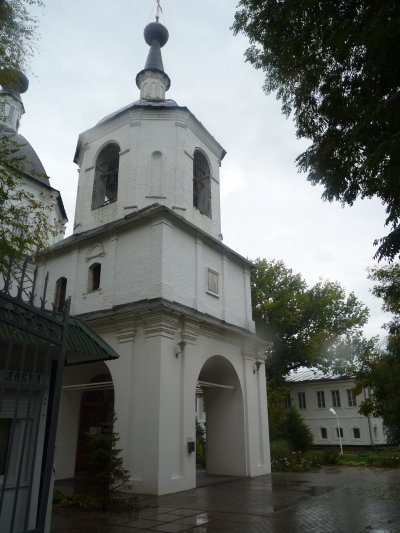
This is the bell tower.

This is in the basement.
On the right is a bronze relief map of the town as it was.
The display cabinets showed aspects of Cossack life and dress.
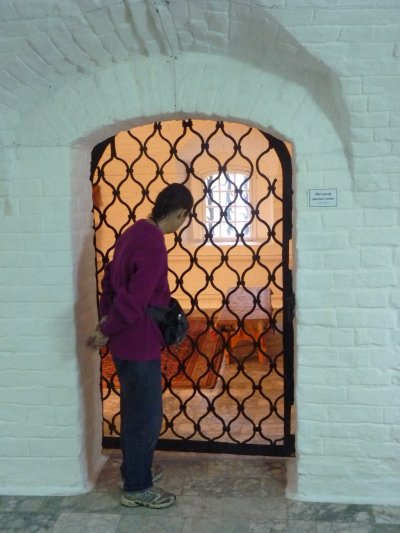
This wrought iron one is made of vertical wiggly bits stitched ogether with loops.
The basement is all brick. Including brick arch ceilings.
We can't help thinking how the arched large room is in incredible contrast to the narrow stone corbels of Angkor Wat.
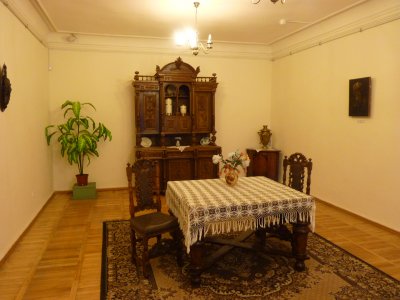
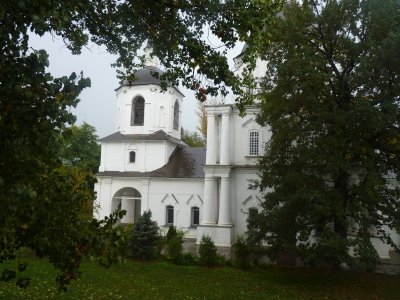

Not sure why bronze has been used but there were many sculptures.
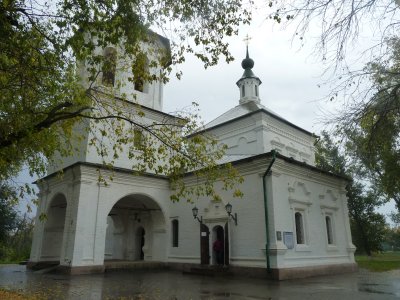
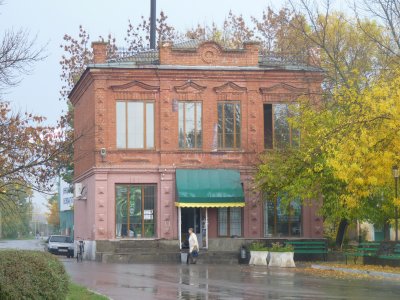
This is a shop.
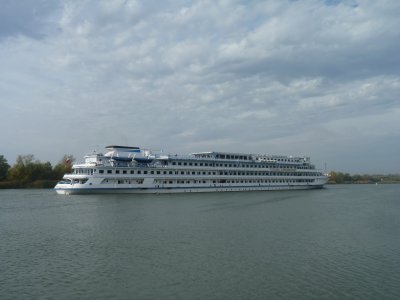
It parked at a jetty just down river of us.
There are also hydrofoils which run a passenger service from Rostov in the summer.
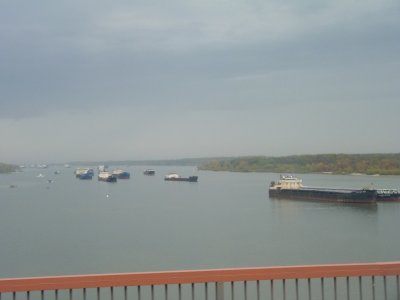
However, common sense prevailed, and we headed around Rostov towards Tagenrog and the Ukraine border.
Rostov was nearly as hard driving through as Volgograd but fortunately the gps worked normally.
This is shipping waiting outside Rostov.
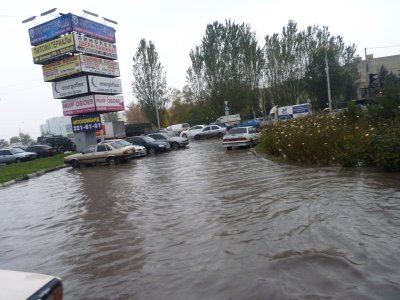
This shopping center car park was a bit full of water, as was the road we were driving along.
It had to be a Volvo that had stopped due to the water and disrupted the traffic flow - otherwise the traffic just ploughed on as if nothing had happened.
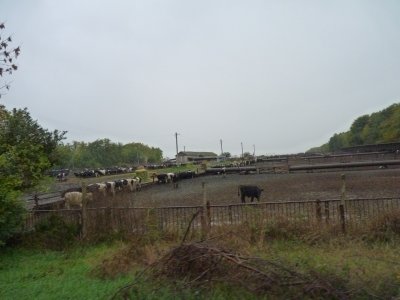
A campsite was a little elusive as we were on motorway and there weren't many wooded stretches.
Late in the day we headed along a small farm track. At the end was a cattle farm.
Now we think we know what happens to all the hay and why we don't see many animals. It looks a bit like a feed lot to us. It seems the feed is brought to the cattle rather than the cattle taken to the feed.
As we were headed back to the main road we slowed to let a vehicle pass. It seemed like the local farmer was a bit suspicious of us and not the least bit welcoming. Judging by the piles of rubbish alongside his track we could understand why. But at least we got directions to Tanais.
We ended up camping outside the gate of Tanais. Hiding from the rain and mud.
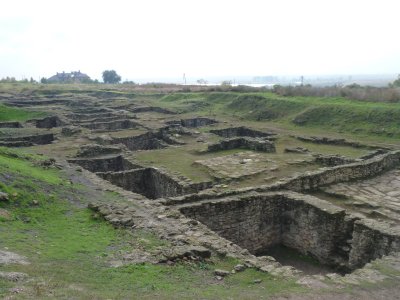
We believe its the most easterly of Greek settlements.
I know we thought we entered Europe after the Urals but perhaps crossing the Volga is the real start of Europe.
We haven't really done our homework on Russian history but the Mongols certainly came this far. There's a town to the east of the Volga that is still predominantly Mongol.
Vaguely interesting. Its about 33 years since I was in Trabzon. A predominantly Greek town on the Black Sea cost of Turkey. It never ceases to surprise me how mixed up the tribes of Europe are and where towns, cities, empires and trading routes developed.
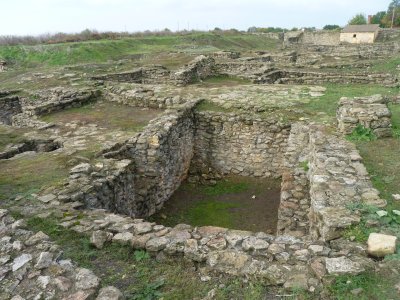
The town had a moat and a wall.
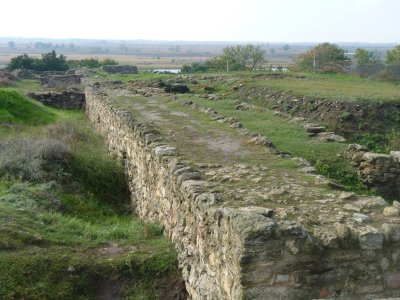
The river is just visible beyond.
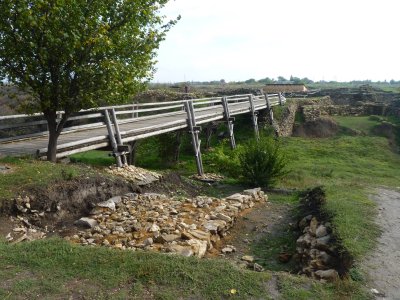
Unfortunately the museum notes were all in Russian so we struggled to understand where the Romans fitted in.
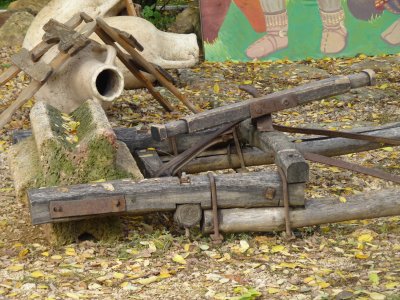
There were a few similar stones lying around.
Not sure why(!) but the steel associated with the wood doesn't quite look first century Greek to me. There was no explanation handy, though it was alongside what looked like where re-enactments take place.
The museum had all sorts of carvings and pottery. Difficult to meaningfully photograph museum contents but the exhibits were finds that seem to have been traded from many places to the west, with very little from the east.

Not architectural experts but it looked to us like a modern sort of 1950's art deco inside.
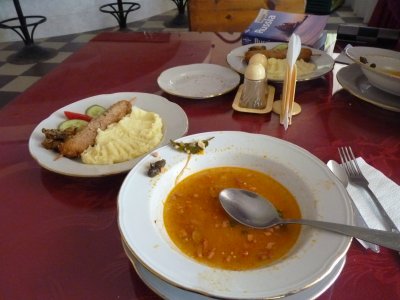
Lunch was salyanka (thick meat soup) with bread and katlyeta (ground meat sausage and potatoes). A cup of lemon chai to complete.
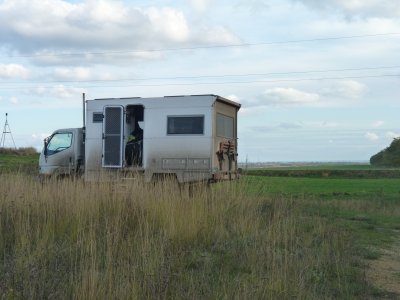
After yesterday's rain the solar regulator failed. I now know that water ran down the cable from the panels on the roof to cause the failure of the first regulator in Malaysia. I seem to have dried this one before any permanent damage and have looped the cable so that any more water can't enter the electronics. The gland at the roof is IP65 weather proof but obviously leaks somehow.
We are both somewhat tired, drained, and lacking in energy, after what seems to have been 30 days of Russia in which we mostly drove long distances. Of course we'll never really know what we've missed. We knew the distance would make our Russia travels very different but that hasn't prevented us becoming run down.
We are ready to cross from Russia to Ukraine in the morning. The aim is to find a spot in the Crimea beside the Black Sea - thanks to Lutz for some hints. And stop to recover a bit. The weather has been warmer the past few days and hopefully that will continue just a bit longer.
Sadly, our thoughts seem to be dominated by "here comes another border" rather than the excitment of "here comes another country".
As I write this we are eating the last of our chocolate from the supermarket - should have bought more!